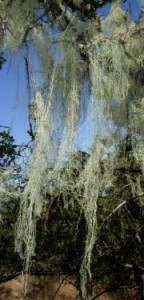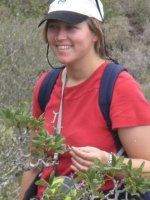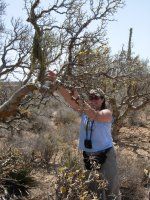Comparative phylogeography of lace lichen (Ramalina menziesii), its green algal photobiont, and its host tree
A critical determinant of the genetic diversity of species is their evolutionary past. Phylogeography, the study of geographic patterns of evolutionary lineages, provides valuable information on the genetic history of populations. We are performing phylogeographic analysis of the patterns of genetic variation of the epiphytic lace lichen, Ramalina menziesii. First, we investigate the impact of glaciations on the genetic structure of the fungal component (mycobiont) of lace lichen, testing the hypotheses that the northern and southern glacial refugia have unique haplotypes and distinct evolutionary lineages, and that sites affected by Pleistocene glaciations have lower genetic diversity. Second, we study host plant co-migration by comparing the phylogeographic pattern of R. menziesii with that of its host plants Quercus lobata, Q. douglasii, and Q. garryana, thus providing information how the phylogeographic pattern of two weakly mutualistic species match. Third, we study the comparative phylogeography of the lichen fungus and its symbiotic green algae, a strongly mutualistic. We are contrasting the congruence of the phylogeographic pattern of a weak mutualism (lichen fungus and host plant) with that of a strong mutualism (lichen fungus and green algae).
This project will make several valuable contributions. First, it will identify localized refugia and evolutionary hotspots for the taxa that will help focus future conservation efforts. Second, because of the broad distribution of the lichen, the findings will clarify hypotheses of glacial refugia in western North America, proposed by various studies. Third, by determining the location of refugia and contact zones, this work will provide insight into the ongoing phylogeographic studies of California oaks, which are species of special concern for California conservation. Most importantly, this study will provide valuable ecological information, the extent to which lace lichen shares a phylogeographic pattern with its host species and its symbiotic green algae.
Some papers on Ramalina menziesii from the Sork lab
Werth, S., and V. L. Sork. 2010. Identity and genetic structure of the photobiont of the epiphytic lichen Ramalina menziesii on three oak species in southern California. American Journal of Botany 97:821-830.
Werth, S., and V. L. Sork. 2008. Local genetic structure in a North American epiphytic lichen, Ramalina menziesii (Ramalinaceae). American Journal of Botany 95:568-576.



